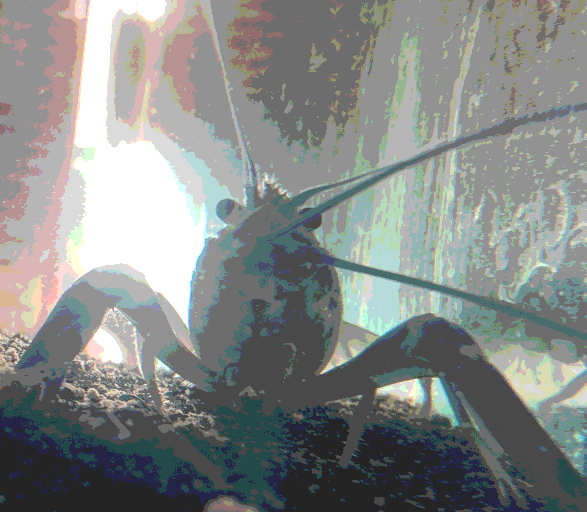Australian Redclaw Crayfish
I first heard about the freshwater tropical Australian Redclaw crayfish (Cherax quadricarinatus) from Farmer Dave Blume when he mentioned them in one of his videos. He talks a little about incorporating them into his system, and mentions a kind of gland of some sort that has bio-available calcium and apparently helps in healing broken bones and that sort of thing.

Right now there seems to be only one source for juvenile Redclaw crayfish in N. America: Live Aquaponics in North Central Florida. They have a great page detailing how to care for the critters: "Redclaw Crayfish: Tasty Freshwater Lobsters".
There's a detailed guide prepared by the Food and Agriculture Organization (FAO) of the UN as part of their "Cultured Aquatic Species Information Programme" (© FAO. 2025. Cherax quadricarinatus. Cultured Aquatic Species Information Programme. Text by Jones, C.. In: Fisheries and Aquaculture. Updated 2011-10-10.)
There's also this Aquarium Breeder page about them that's even more detailed (they reference the FAO report) and comprehensive, and the rest of the site has great information too.
In sum, these are hardy and easy to care for, they make great pets, and you can eat them.
Aquaculture
In order to raise these crayfish humanely I want to create a system that imitates their natural habitat as closely as feasible. Normally they live in creeks and what-are-called billabongs:
a billabong is a small body of water, usually permanent. It is usually an oxbow lake caused by a change in course of a river or creek, but other types of small lakes, ponds or waterholes are also called billabongs. The term is likely borrowed from Wiradjuri, an Aboriginal Australian language of New South Wales.
Crayfish are bottom dwellers and detritovores (they eat detritus) so in theory they should go well with other species (like Tilapia) since they are also non-agressive. Ideally I'd like to set up a system that mimics a slow creek, complete with plants, and phytoplankton and zooplankton (food for the juvenile crayfish) and let them just live in there. I don't intend to eat them, or farm them intensively. Rather I'd like them to just hang out and do their thing, and occasionally we might eat one for a special dinner or something.
